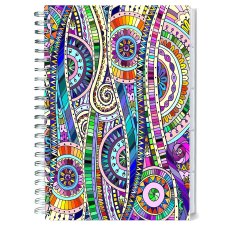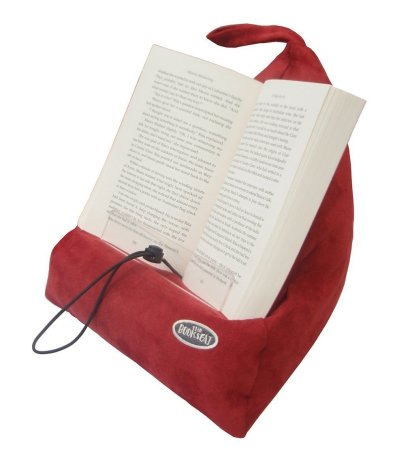See Part 2: Physical health and Part 3: Mental health, as well.
Why an accommodations and products series? One of the things that chronic health problems will do to you is make you try anything to make things even a little better. My friends, the goal for this series is that you won’t have to go through as much of the rabbit trail searching that I did because now you get to learn from my mistakes and get straight to the good stuff! This part one of a 3-part series about my favorite things that help me wisely manage. Many of these accommodations are cheap and even free; some are more costly, but I promise they have made a big enough difference for me that I wanted to mention them anyway.
I’ve learned from the best occupational therapists, physical therapists, (mental health) therapists, doctors, nurses, peers, and so on over the years – especially during my month at the Mayo Clinic Pain Rehabilitation Clinic – about how to manage the tricky balance of caring for my health concerns and having a rich, full life. The 3 parts of this accommodations and products series will be about vocational/organizational health, physical health, and mental health. This particular post is about vocational/organizational accommodations and how they help me establish the rhythms of my life.
(For reference, I have a Mac and an iPhone, but I’m sure that there are equivalent apps on other computers and phones, too.)
Vocational and organizational accommodations
- Planner
 Yes. A real, paper planner. I love this Tools4Wisdon planner ($23) because it has a half-hour-by-half-hour view of Monday-Friday from 6AM-10PM (and large enough boxes on the weekends to still be specific). It also has ample space for you to set goals for the day, week, month, and year. I spend about a half hour each Sunday afternoon setting up my week, and I have two lists on my computer that help me remember things that I could easily forget: 1) My new year’s resolutions, and 2) Things that need to get put into scheduling considerations but are often forgotten about (like doing laundry, cooking, and putting medications into weekly organizers).
Yes. A real, paper planner. I love this Tools4Wisdon planner ($23) because it has a half-hour-by-half-hour view of Monday-Friday from 6AM-10PM (and large enough boxes on the weekends to still be specific). It also has ample space for you to set goals for the day, week, month, and year. I spend about a half hour each Sunday afternoon setting up my week, and I have two lists on my computer that help me remember things that I could easily forget: 1) My new year’s resolutions, and 2) Things that need to get put into scheduling considerations but are often forgotten about (like doing laundry, cooking, and putting medications into weekly organizers).
- Habit tracker
Another way to make my new year’s resolutions more tangible is to put them on a free monthly sheet that tracks up to 15 of them by Clementine Creative. It’s important to be realistic and kind with yourself as you track behaviors, but it can be quite helpful.
- Reminders app
My external memory. Mobile reminders are the post-its that don’t get lost. I use Apple Reminders and I set specific times (and move them if necessary, which happens more than I’d like to admit).
 Calendar app
Calendar app
To serve as a backup for and to be able to plan ahead for what I’ll put in my planner. It looks scarier than it is, and it’s far more helpful than scary: I have mine organized into multiple colors: Social events, self-care, church, school assignments, class, extracurricular activities, chores, possible events to go to, health appointments, chores, blog work, volunteer work, and paid work. If I put in the address of where each event is, my phone will even let me know when it’s time to leave! (So will my navigation app, Waze. They’re both awesome.)
- f.lux and Shady apps for computer (with the equivalent settings on iPhone) to increase warmth/reduce blue light as the day goes on and to reduce brightness below lowest possible brightness
To help you follow your body’s natural sleep-wake cycle (producing cortisol in the morning and producing melatonin at night), you need your most-used technologies not to get in the way. Let f.lux and Shady on your computer, and certain settings on your phone (Night shift for blue light and accessibility settings for lower-than-lowest brightness, to help you do that. Best part: They’re all free, and you can adjust the settings for when you wake up and go to bed).
- Multi-pocket folder and a 1″ binder with dividers
Grad school is notorious for just how much reading you do. Some of these readings come in electronic form. In order to make sure I’m not always on my computer (and because I read better on paper), I print out all of my documents at the beginning of the semester. (Two-sided… But still, sorry, trees!). Each week, I put that week’s readings in a smaller binder to carry with me, and I keep my class notes in a multi-pocket folder. That way, I don’t have to always have multiple binders and thousands of pages of reading on hand.
- Settings to make your computer talk to you
For people who struggle to focus on any of those long readings, you can get your computer to read many PDFs, websites, and all Word documents to you for free, just by going through your computer’s settings. I often listen and read along at the same time. Many e-readers like Kindles have settings for this, too.
- Ergonomic laptop setup
We often get into terrible postures doing our work, since most of us use laptops rather than desktop computers. We often lean down too far, have our wrists at a bad angle, and so on. In order to avoid this, you’ll need to move up your screen height, use a real mouse and keyboard, and have a way to support your wrists.
I chose all of these items because they were highly portable, made for the way that our body is supposed to function, and well-rated. Wrist and mousepads ($14), laptop stand ($55), foldable bluetooth keyboard ($35), and a vertical bluetooth mouse ($20).

- Free Google Chrome (internet browser) extensions
- StayFocusd to be able to block or limit certain websites on certain days. I don’t let myself go on Facebook, Twitter, or Tumblr for more than 20 minutes total from 6AM-9PM Mondays-Fridays.
- OneTab for when your computer starts to slow down (and your stress at the disorganization grows) because of your many open tabs. (I also keep a “To be organized” folder on my desktop because I need to at least feel organized.)
- Grammarly to help my writing stay as error-free as possible. It tracks spelling mistakes (including contextual mistakes) and checks grammar, and even sends you a progress report each month.
- Honey price checks things to make sure you’re getting the best deal by checking coupon codes and competitor prices. It’s saved me money on at least half of my online purchases.
- Tab for a Cause and Goodblock because you can earn money for worthy non-profits just by opening up new tabs and blocking ads. It helps you and them.
- Clipboard
Because oftentimes, the desk isn’t at just the right spot for you to get comfortable. You can get one for a few bucks at an office supply store.
- Ergonomic pencil grips
For people who get pain when writing, this little tool ($7 for 3) can help.
- Booklight
For when you want to read at night, but don’t want to disrupt your sleep-wake cycle by having the fuller lights on, use one of these. You can get one for just a few bucks at most stores.
- Office chair
My family and I splurged on an ergonomic office chair ($100), and it really, really rocks, y’all. 
- Book seat
So that your ergonomic office posture continues, here’s a great way to keep your book up without having to hold it ($30).
- Wunderground
Because nothing’s worse than showing up in wet clothing because you didn’t know it was going to rain. Wunderground is my favorite weather app because of its accuracy and expansive details.

Such fantastic suggestions! I can’t get anything done without my bullet journal. My memory is so bad that if it isn’t in there, it doesn’t get done. I need to try using the Reminders App, it sounds like it could be really helpful! Xx
Tania | When Tania Talks
LikeLike
You are far too kind – thank you!!
LikeLike